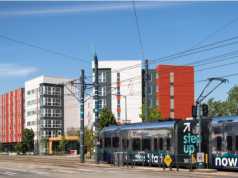City Light Meeting, Exceeding Renewable Energy, Conservation Goals
I-937 Requires 15 Percent New Renewable Energy by 2020
SEATTLE – December 21, 2012 – (RealEstateRama) — Seattle City Light has significantly exceeded its energy conservation and renewable energy targets for the first compliance periods of Initiative 937 and is well on its way to meeting the state’s renewable energy targets through 2020.
Under the Energy Independence Act, known as Initiative 937, which voters approved in 2006, state electric utilities serving 25,000 or more customers must meet two goals. They must obtain 15 percent of their electricity from new renewable resources by 2020. And they must undertake all cost-effective energy conservation, a goal that is set for City Light by the City Council.
“Seattle City Light is a strong proponent of clean, environmentally sensitive energy,” Superintendent Jorge Carrasco said. “We have made smart investments in energy conservation and renewable energy projects. By getting in early and contracting for future renewable energy credits when the utility will need them, we’re on track for meeting state requirements while keeping the cost low for our customers.”
For energy conservation, I-937 requires each covered utility to identify its achievable, cost-effective conservation potential over a 10-year period, starting in 2010-2011. Utilities must update those assessments at least every two years.
Seattle City Light’s 2010-2011 energy conservation target was set by the City Council at 172,397 megawatt-hours, using the Northwest Power and Conservation Council’s power plan calculator.
Over that timeframe, City Light achieved 267,813 megawatt-hours of energy savings, exceeding the target by 55 percent. That success came from helping customers reduce their energy consumption, which also lowers their bills. Energy efficient lighting upgrades, ranging from residential customers installing compact fluorescent light bulbs to businesses retrofitting their buildings were responsible for much of that savings.
City Light recently completed an assessment of potential energy conservation that could be achieved from 2012 through 2021. Based on that analysis, the City Council adopted a 2012-2013 energy savings target of 210,328 megawatt-hours.
State requirements regarding new, renewable resources went into effect this year. They increase over time, topping out at 15 percent of a utility’s energy portfolio in 2020. Those requirements are measured in renewable energy credits. One credit is created for every megawatt-hour of new, renewable energy produced.
Examples of renewable energy include electricity produced by wind, solar, landfill gas and biomass. To qualify under I-937, the renewable resources must have started operation after 1997. Seattle City Light’s legacy hydroelectric dams do not qualify, but any new modifications that increase efficiency or capacity do qualify.
City Light has contracted with multiple providers of renewable energy to meet these requirements, including wind power at the Stateline wind farm in eastern Washington and 172,397 megawatt-hours of electricity from landfill gas at the Columbia Ridge landfill in Oregon.
Such contracts specify the amount of energy and/or renewable energy credits and when the utility will receive them. For example, one recent contract acquired renewable energy credits from the Sawtooth Wind Project in Idaho that won’t start until 2015.
In some cases, the utility purchased electricity and the renewable energy credits associated with that production. In other instances, City Light bought only the renewable energy credits because City Light’s existing energy supplies are adequate to meet customer demands.
With its existing contracts, City Light has enough renewable energy in its portfolio to meet I-937’s requirements through 2019.
In 2020, City Light’s target rises to 1,609,000 renewable energy credits. City Light has 836,000 renewable energy credits in place for 2020 and has eight years to acquire the rest. That work is already well underway. For example, a generator rewind project that is underway at Boundary Dam will add 30 megawatts of capacity that will count toward City Light’s goal.
For more details, you can read a copy of the I-937 conservation and renewable energy portfolio report City Light filed with the Washington Department of Commerce at http://seattle.gov/light/renewable/epc.asp.
Seattle City Light is the 10th largest public electric utility in the United States. It has some of the lowest cost customer rates of any urban utility, providing reliable, renewable and environmentally responsible power to nearly 1 million Seattle area residents. City Light has been greenhouse gas neutral since 2005, the first electric utility in the nation to achieve that distinction.
Contact:
Scott Thomsen (206) 386-4233




